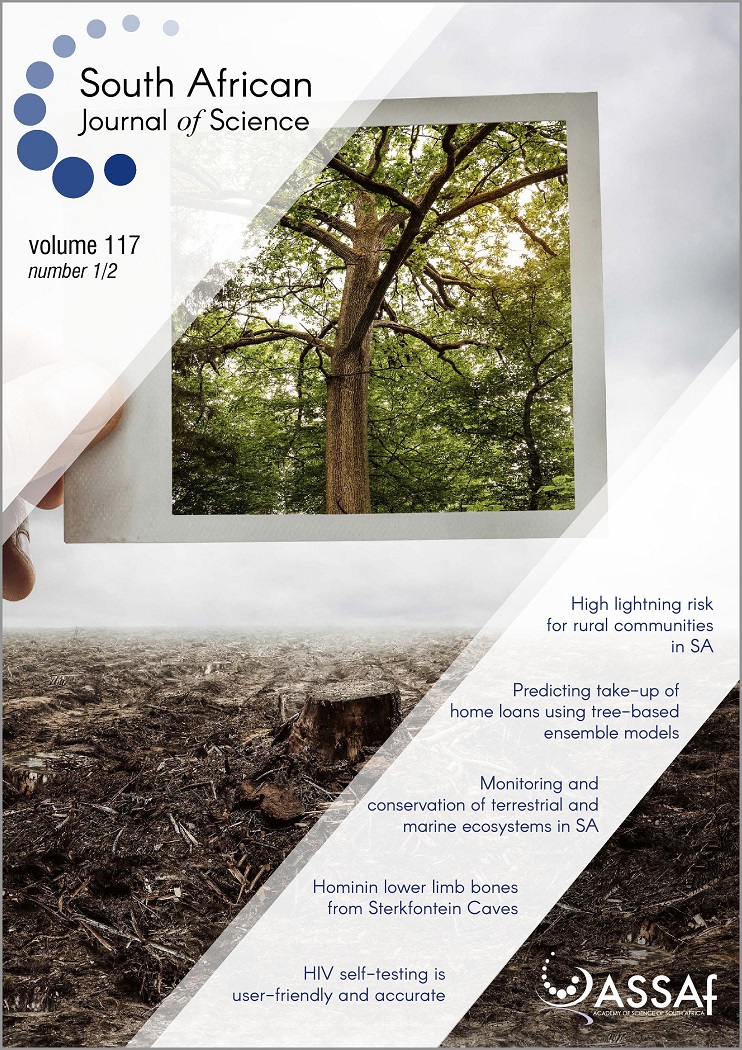The altitude of sprites observed over South Africa
DOI:
https://doi.org/10.17159/sajs.2021/7941Keywords:
charge moment change, lightning, transient luminous eventsAbstract
Sprites are mesospheric optical emissions that are mostly produced by large, positive cloud-to-ground lightning discharges. Sprites appear in different morphologies such as carrot, jellyfish and column, and are typically in the altitude range of ~40–100 km above the Earth’s surface. Sprites are a subset of transient luminous events and they contribute to the global electric circuit. South Africa has large convective thunderstorms, which typically occur in the summer months of every year. Peak current, time and geographical position of lightning strokes were obtained from the South African Weather Service. Sprite observations were recorded in South Africa for the first time on 11 January 2016 from Sutherland in the Northern Cape using a night-vision television camera from the South African National Space Agency’s Optical Space Research laboratory. We report the first estimates of the top altitude, and the altitude of maximum brightness, of 48 sprites over South Africa. We found that the average top altitude and the altitude of maximum brightness of sprites are approximately 84.3 km and 69 km, respectively, which is consistent with estimates made elsewhere. We also found a moderately high positive and a weak positive correlation between the top altitude and the altitude of maximum brightness, respectively, of sprites and the lightning stroke charge moment change.
Significance:
- We present the first altitude estimation of sprites observed over Africa.
- The altitude of sprites observed over South Africa is in agreement with observations made elsewhere.
- There is a positive correlation between the top altitude of sprites and the parent lightning charge moment change.
- Sprite maximum brightness is observed near the stratopause.
Downloads
Published
Issue
Section
License

All articles are published under a Creative Commons Attribution 4.0 International Licence
Copyright is retained by the authors. Readers are welcome to reproduce, share and adapt the content without permission provided the source is attributed.
Disclaimer: The publisher and editors accept no responsibility for statements made by the authors
How to Cite
- Abstract 1063
- PDF 661
- EPUB 186
- XML 242
- Supplementary Material 61












.png)